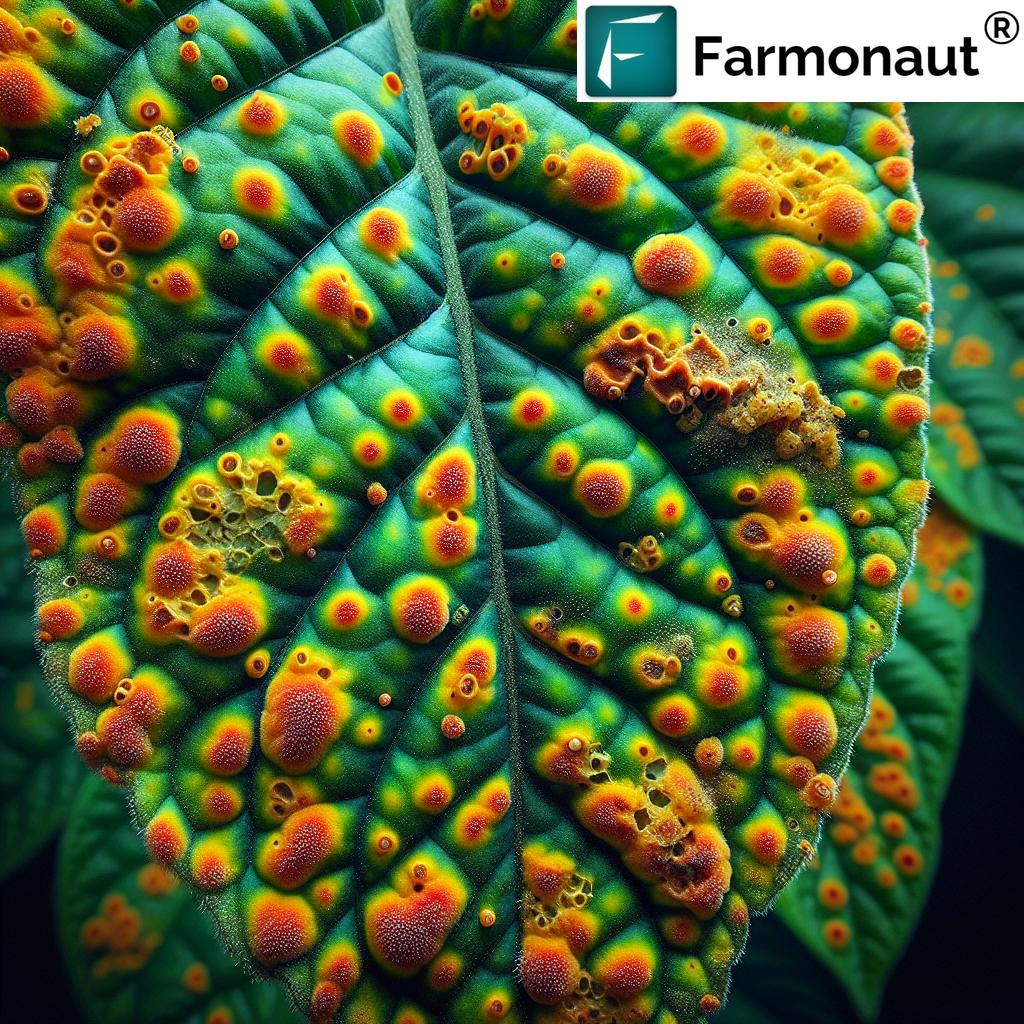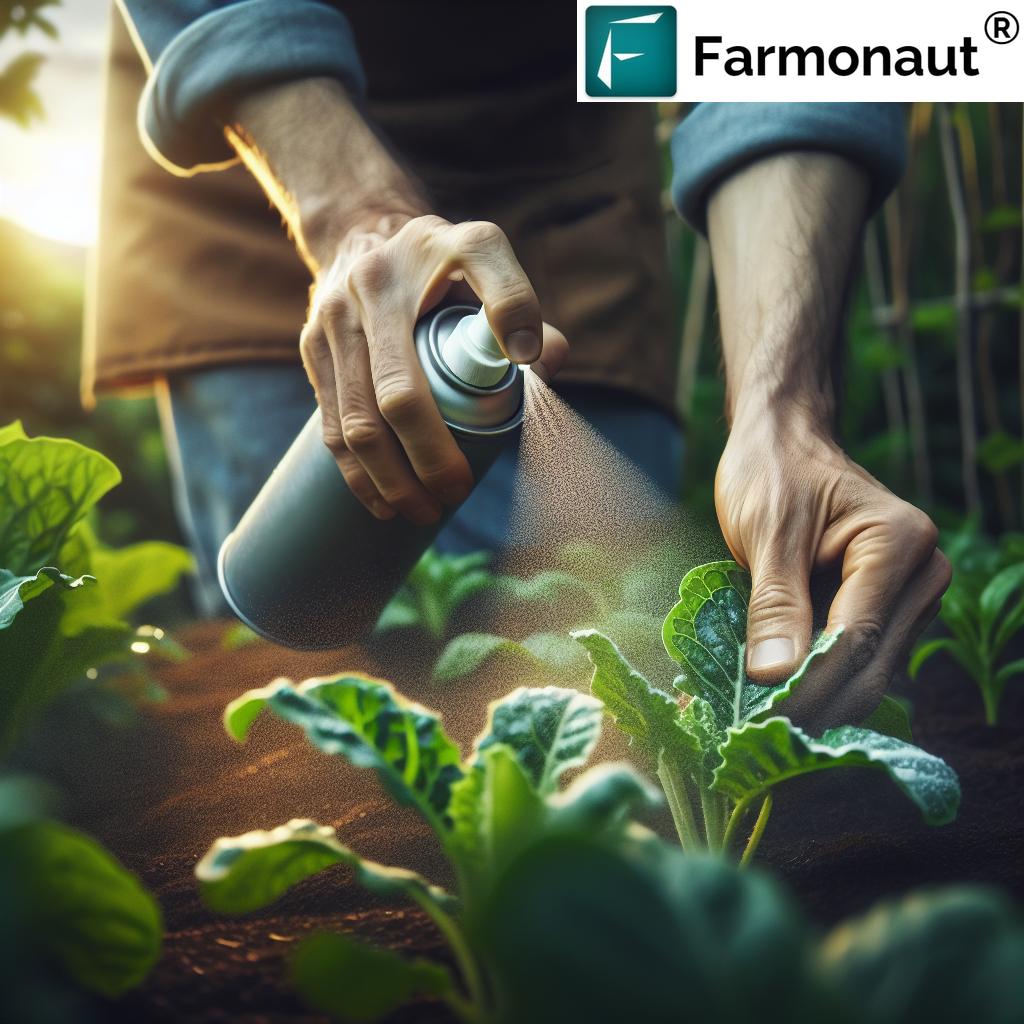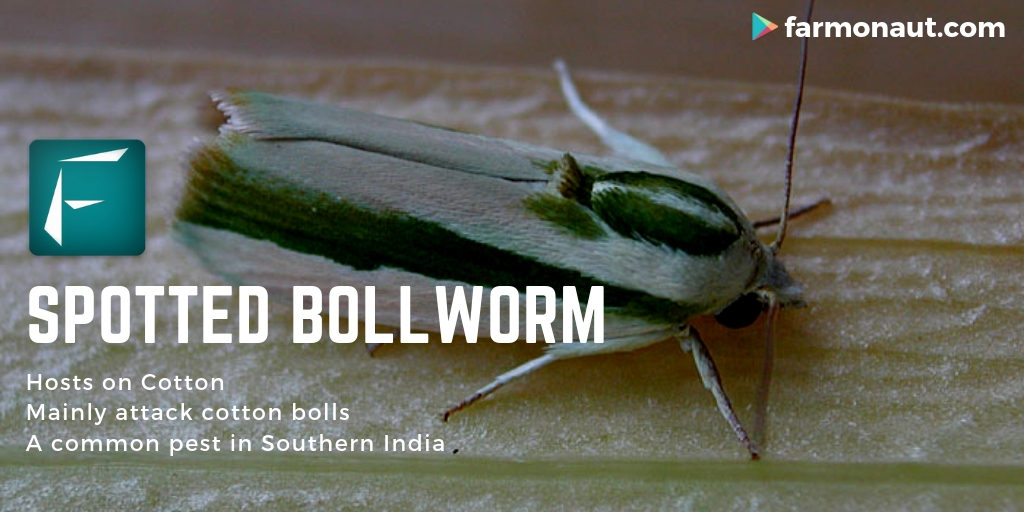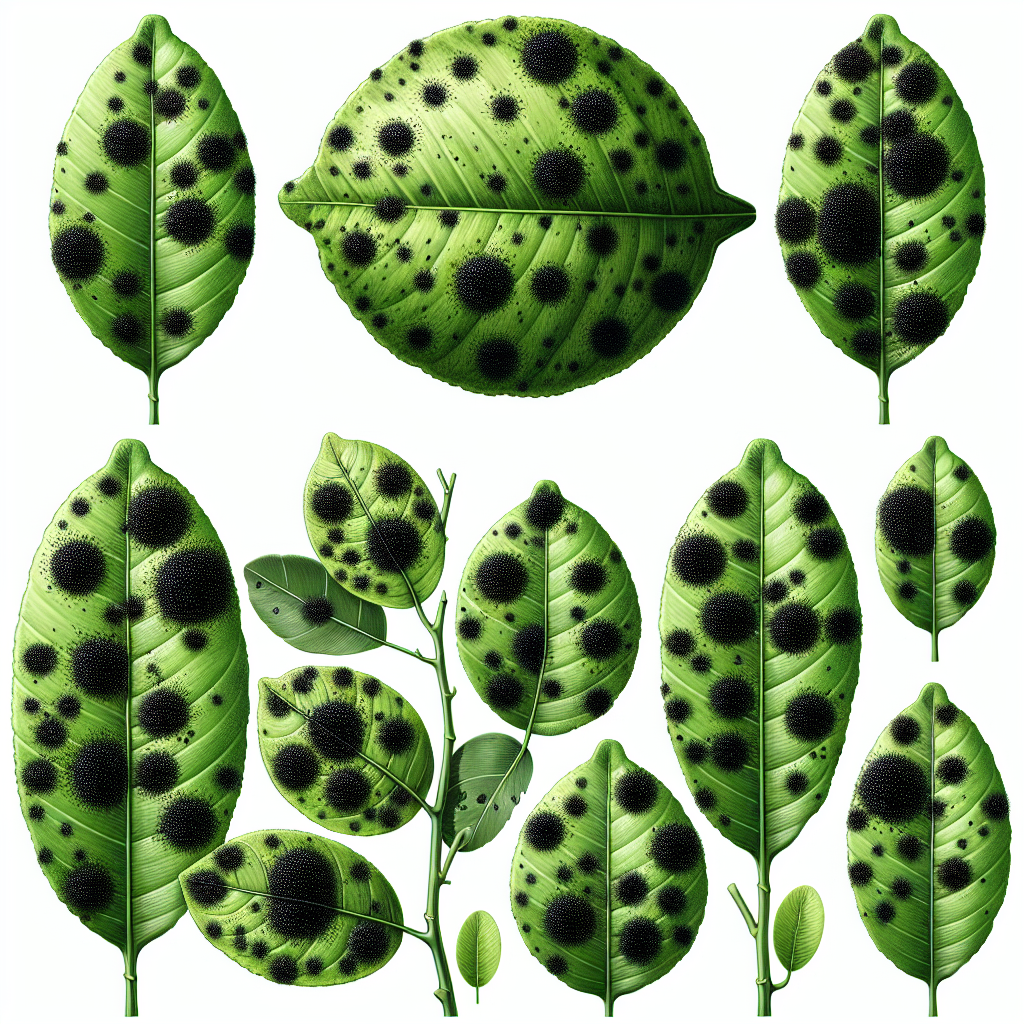How Do You Treat Rust on Plants? 7 Expert Proven Methods
Rust Disease Quick Facts
“Over 7,000 plant species worldwide are susceptible to rust diseases, impacting global crop yields significantly.”
Rust diseases are a group of fungal infections that affect a wide range of plants, including vegetables, fruits, and ornamental species. If left unchecked, rust fungi can lead to significant yield losses and reduced plant vigor, threatening food security and decreasing crop profitability.
In this comprehensive guide, we explore the early signs of rust fungus, common fungal infections in crops, and 7 expert-proven methods to control, prevent, and treat rust on plants for healthier harvests.
Understanding Rust Fungi: Life Cycle, Spread, and Impact
Rust fungi belong to the order Uredinales and are classified as obligate biotrophs—they require living host tissue to complete their complex life cycle. These disease-causing fungi are notorious for their ability to produce massive quantities of spores, facilitating rapid spread in both field and garden settings.
Let’s break down how rust disease in plants develops, spreads, and persists:
- Obligate Biotrophs: Rust fungi can’t survive long without a living plant host, making constant crop monitoring essential, especially during periods of active growth.
- Spores: They produce wind-dispersed, water-dispersed, or insect-dispersed rust spores. Identifying rust spores on plants early is crucial for effective management.
- Environmental Conditions Favoring Rust Development: High humidity (above 80%), dense planting (poor air circulation), and moderate temperatures (16°C to 27°C/60°F to 80°F) are optimum for rust fungi to thrive.
- Fungal Infection Cycle: Spores infect healthy leaves, producing orange/yellow raised pustules on the lower and sometimes upper leaf surfaces. They continue to reproduce throughout the season, causing leaf distortion, premature defoliation, reduced growth, and potential crop failure if left unchecked.
Knowing the life cycle and spread enables us to implement preventive strategies and timely rust management practices.
Identifying Rust Disease in Plants: Early Signs and Detection Tips
Early detection is our best defense against rust fungal infections in crops and ornamental species. By regularly inspecting our plants—especially the leaves—we can spot infection before it spreads and implement effective control methods.
-
Yellow spots on plant leaves (Upper Surfaces):
- Look for tiny, scattered, or clustered yellow, orange, or red spots on the upper leaf surfaces—these are often the first visible symptoms.
-
Raised Pustules on Leaf Undersides:
- Check the lower surfaces for raised, powdery, or blister-like pustules (containing rust spores). Gently rub them with a finger or tissue: orange/red spores may come off on your skin.
-
Advanced Rust Infections:
- Leaf distortion, curling, yellowing, or premature defoliation (leaves dropping before their time).
- Stunted plant growth and, for vegetables and fruits, reduced yields.
Tip: Regular, close-up inspection of both upper and lower foliage—ideally weekly, or more often during humid, warm periods—can help us catch early signs of rust fungus, greatly improving the chance of successful treatment.
“Applying fungicides within 24 hours of rust detection can reduce infection spread by up to 80%.”
How to Prevent Rust on Leaves: Proven Preventive Measures
Preventing rust disease in plants is far easier—and more effective—than battling a full-blown infection. By implementing preventive strategies, we can significantly reduce the risk of rust fungus taking hold.
1. Select Resistant Varieties
- Opt for rust-resistant plant cultivars (e.g., Russian hollyhock, Figleaf hollyhock for hollyhocks). Consult plant labels or extension websites to identify varieties bred for resistance to common rust fungi.
- This is especially critical for vegetables, fruits, and ornamental species with significant local rust problems.
Pro Tip: Choosing resistant varieties is an excellent long-term, organic rust control method. Pair this with vigilant monitoring for best results.
2. Ensure Proper Plant Spacing
- Allow adequate spacing between plants to promote air movement, which helps keep foliage dry and reduces humidity—two key factors in preventing fungal infections.
- This practice is especially important for susceptible crops like beans, tomatoes, and ornamentals.
3. Correct Watering Practices
- Water at the base of the plant (using drip irrigation or a soaker hose) rather than overhead. Wet leaves create ideal conditions for spores to germinate.
- If overhead watering is used, do so early in the day—the sun will dry leaves, reducing the risk of fungal infection.
4. Maintain Garden Sanitation
- Remove and destroy infected leaves, stems, or plant debris immediately. Never compost infected material, as rust spores can survive and reinfect successive crops.
5. Apply Organic Mulch
- Place a 2–3 inch layer of mulch (composted bark, straw, etc.) around the base of plants. This blocks soil-borne spores from splashing onto lower leaf surfaces during rain or watering.
Cultural Rust Control Practices
- Pruning: Regularly remove and dispose of infected leaves and stems to decrease spore loads. Do not remove more than 1/3 of total foliage in one go to avoid plant stress.
- Crop Rotation: Avoid planting the same susceptible crops in the same location year after year. This prevents the build-up of rust spores in the soil and disrupts the fungi life cycle.
By implementing these preventive measures, we can significantly reduce the chances of rust outbreaks and minimize the need for harsh chemical interventions.
7 Expert-Proven Rust Management Practices (With Comparison Table)
Controlling rust on plants requires a blend of organic, chemical, and cultural methods. Below, we summarize seven expert-recommended strategies—all effective for treating rust on vegetables, fruits, and ornamentals.
| Method Name | Description | Estimated Effectiveness Rate (%) | Application Frequency | Required Materials | Safety/Environmental Impact |
|---|---|---|---|---|---|
| Remove Infected Leaves | Early, prompt removal of infected leaves and stems, destroying material off-site. | 60–75% | As soon as symptoms appear; repeat weekly | Pruning shears, disposable gloves | Safe; organic; prevents spore spread |
| Apply Approved Fungicides | Use of commercial fungicide products such as sulfur, copper, or systemics (myclobutanil, azoxystrobin). | 70–90% | Every 7–14 days during risk; after rain; per product label | Sulfur powder/liquid, copper fungicide, systemic fungicide, spray equipment, PPE | Moderate; residue risk if misused; follow label instructions |
| Opt for Resistant Varieties | Plant rust-resistant species/cultivars; rotate susceptible crops out. | 60–85% | Annually, at planting | Seeds/seedlings of resistant varieties | Safe, sustainable, long-term prevention |
| Improve Spacing & Air Circulation | Proper spacing and strategic pruning to reduce humidity and rapid spore spread. | 55–70% | At planting; maintain pruning each season | Pruners, plant stakes/markers | Safe; organic; encourages overall plant health |
| Organic Treatments (e.g., Neem Oil, Baking Soda) | Weekly foliar sprays with neem oil, baking soda solution, or elemental sulfur. | 50–75% | Every 5-10 days when conditions are conducive | Neem oil, mild soap, baking soda, sulfur, water, sprayer | Low risk; eco-friendly if label rates followed |
| Soil & Garden Sanitation | Remove plant debris, apply mulch, disinfect garden tools after use in infected areas. | 50–70% | Throughout growing season; after harvest | Mulch, pruning tools, disinfectant | Safe, essential good practice |
| Crop Rotation | Avoid growing the same susceptible crops in affected beds year after year. | 45–65% | Annually | Crop planning tools, seeds | Highly sustainable, improves soil health |
1. Remove Infected Leaves & Dispose Properly
- As soon as we notice rust spots on plant leaves (especially yellow, orange, or red spots on upper surfaces; pustules on undersides), we must remove the affected leaves to break the infection cycle.
- DO NOT compost infected plant material. Bag and dispose in municipal waste or burn if permitted.
- This practice is especially critical for treating rust on vegetables and seasonal crops.
2. Apply Approved Fungicide—Organic & Chemical Options
- For mild cases: Use sulfur-based or copper-based products (e.g., Bonide Liquid Copper) as a preventive/follow-up measure. Dust or spray on both upper and lower leaf surfaces.
- For severe cases: Apply a systemic fungicide (containing myclobutanil or azoxystrobin) as soon as symptoms are detected. Always follow label instructions and safety guidelines to avoid harming beneficial insects and prevent resistance.
- Effectiveness: Spraying or dusting within 24 hours of early detection can reduce further infection spread by up to 80%!
3. Choose Resistant Varieties for Your Region
- Every year, identify and plant resistant or tolerant cultivars. Extension services or local seed suppliers often list varieties with proven rust resistance for each region.
4. Optimize Spacing & Airflow
- Overcrowded planting increases humidity and creates a microclimate for fungi. Follow recommended spacings based on species and regularly prune to maintain airflow.
5. Use Organic Rust Control Methods (Natural Remedies)
-
Neem Oil Spray:
- Mix 1 teaspoon neem oil + 0.5 teaspoon mild liquid soap with 1 liter water. Spray both upper and lower surfaces of affected foliage weekly.
- Neem oil is effective and organic, disrupting fungal infections and preventing new spore germination.
-
Baking Soda Spray:
- Mix 1 tablespoon baking soda + 1 tablespoon horticultural oil + 1 gallon water. Spray thoroughly every 7–10 days.
-
Elemental Sulfur Powder/Spray:
- Dust or spray with sulfur on all surfaces of leaves to suppress fungal activity, preferably in the early morning and not above 27°C (80°F).
6. Maintain Cleanliness: Soil and Garden Sanitation
- Collect and destroy (do not compost) plant debris after each season and apply a fresh layer of organic mulch to block soil-borne spores.
- Disinfect pruning tools between plants to avoid accidental spread of rust fungus.
7. Practice Yearly Crop Rotation
- Rotating plant families and avoiding susceptible crops in previously infested beds disrupts the rust life cycle and improves long-term soil/plant health.
Smart Rust Disease Management With Farmonaut: Real-Time Tools for Proactive Crop Monitoring
Modern precision agriculture tools are game changers for rust management. Farmonaut’s satellite-based platform brings affordable, real-time crop health monitoring to farmers, agribusinesses, and governments worldwide. With Farmonaut, we can:
-
Pinpoint Early Rust Infections – Multispectral satellite imagery (NDVI, SAVI, etc.) and real-time crop monitoring reveal areas of reduced vigor often caused by fungal infections, allowing for immediate scouting and targeted treatment.
Use case: Large-scale farmers can use Farmonaut’s Large Scale Farm Management Platform to scan broadacre crops fast for signs of rust and other plant diseases, increasing efficiency and yields. - Access AI-Based Advisory – The Jeevn AI system provides tailored guidance on rust management practices, watering, and weather, so we can adapt control methods as environmental conditions change.
-
Verify Practices for Crop Loans & Insurance – Satellite-verified data supports compliance for
crop loan and insurance claims, ensuring rust-affected fields are accurately mapped and managed. - Maintain Supply Chain Trust – For farm-to-market transparency, Farmonaut’s traceability solutions enable rust-free certification for vegetables or fruits, building trust with buyers and consumers.
- Optimize Resource Efficiency – Integrated carbon footprinting tools and fleet management systems track our impact and reduce resource waste, contributing to sustainability while fighting rust.
Ready to access Farmonaut’s API for in-depth, automated monitoring, or to integrate with existing management software? Visit the Farmonaut API page or review the Farmonaut Satellite Weather API Developer Docs for more details.
For forest and plantation advisors who want one-click access to all features, our Crop, Plantation & Forest Advisory platform delivers everything in a single hub.
Frequently Asked Questions (FAQs) About Rust on Plants
-
Q: What is the best fungicide for rust?
A: The best fungicide for rust depends on your crop and stage of infection. Sulfur-based and copper-based fungicides are effective and approved for both organic and conventional growers. For severe infections, systemic fungicides like myclobutanil or azoxystrobin offer high effectiveness. Always follow product labels and local guidelines. -
Q: Can I eat vegetables or fruits if the plant had rust?
A: Rust fungi infect leaves and stems, not fruit flesh or roots. Wash produce thoroughly before consumption; discard heavily spotted, deformed, or wilted products. For sustainable practices, treat rust early and use traceability tools to document safe growing standards. -
Q: Are there any natural remedies to control rust fungus?
A: Yes! Regular weekly sprays of neem oil solution, baking soda mixtures, and elemental sulfur are proven organic solutions for rust control. These are safe for most crops if applied at proper rates, offering eco-friendly alternatives to more synthetic options. -
Q: Why does rust keep coming back even after treatment?
A: Rust fungi produce huge quantities of spores. If infected debris is left in the garden, susceptible varieties are grown, or humidity and plant crowding remain unchecked, the fungi will persist. Combine all seven methods—sanitation, resistant varieties, spacing, organic/chemical sprays, and rotation—for lasting success. -
Q: How can I monitor large fields for rust infections?
A: For large or remote farms, satellite crop health tools like Farmonaut are ideal. With regular multispectral images, we can spot stressed regions before symptoms are visible to the naked eye and direct inspection efforts precisely. -
Q: Is it safe to use fungicides during flowering or fruiting?
A: Most organic products (e.g., sulfur, neem oil) are safe to use at any plant stage if label instructions are strictly followed. Systemic fungicides often have pre-harvest intervals; check your product label to ensure compliance. When in doubt, opt for early, preventative applications. -
Q: Can rust fungus survive winter?
A: Many rust fungi can overwinter as spores in plant debris or on alternate host plants. End-of-season cleanup and destruction of debris are vital for long-term control.
Farmonaut Subscription Packages
For full access to satellite crop health monitoring, AI-based rust advisories, and year-round farm management support, check out our affordable, scalable subscription plans below.
Conclusion: A Holistic Approach to Rust Control in Plants
Controlling rust disease in plants is a multifaceted challenge—but with early detection, preventative action, and precise intervention, we can dramatically reduce crop losses and support healthy plant growth. Combining monitoring technology (like Farmonaut’s satellite platform), traditional scouting, good cultural practices, and eco-friendly treatments is key to success.
Remember, identification and timely action make the greatest difference. Integrate the best of modern and sustainable rust management practices, stay proactive, and our vegetables, fruits, and ornamentals can thrive season after season with minimal disease pressure.
Ready to monitor, diagnose, and optimize farm health in real time? Try Farmonaut’s app/web platform or APIs and access the next generation of precision agriculture from anywhere!


















